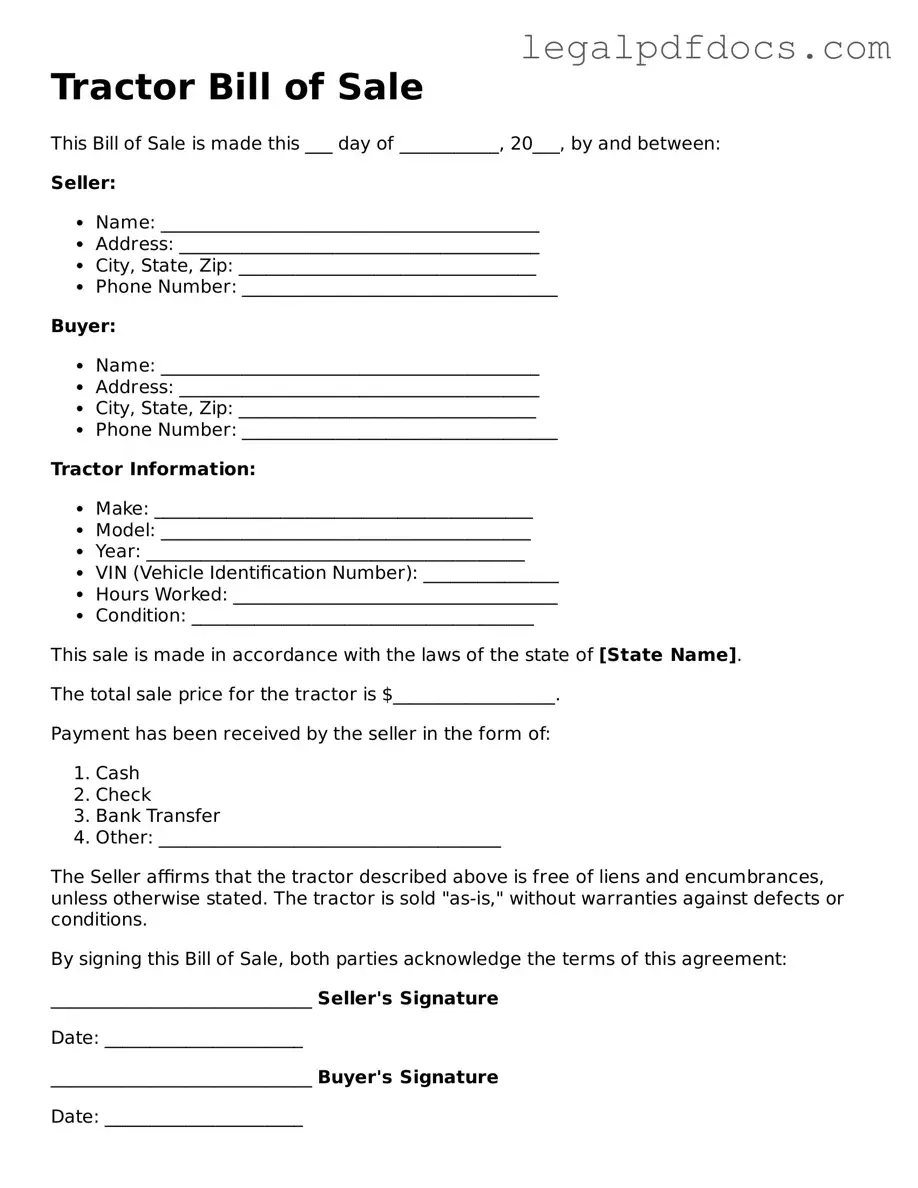Tractor Bill of Sale Template
A Tractor Bill of Sale form is a legal document that records the transfer of ownership of a tractor from one party to another. This essential form not only provides proof of the transaction but also helps protect both the buyer and seller by outlining important details of the sale. Ready to secure your transaction? Fill out the form by clicking the button below.
Open Tractor Bill of Sale Editor Here
